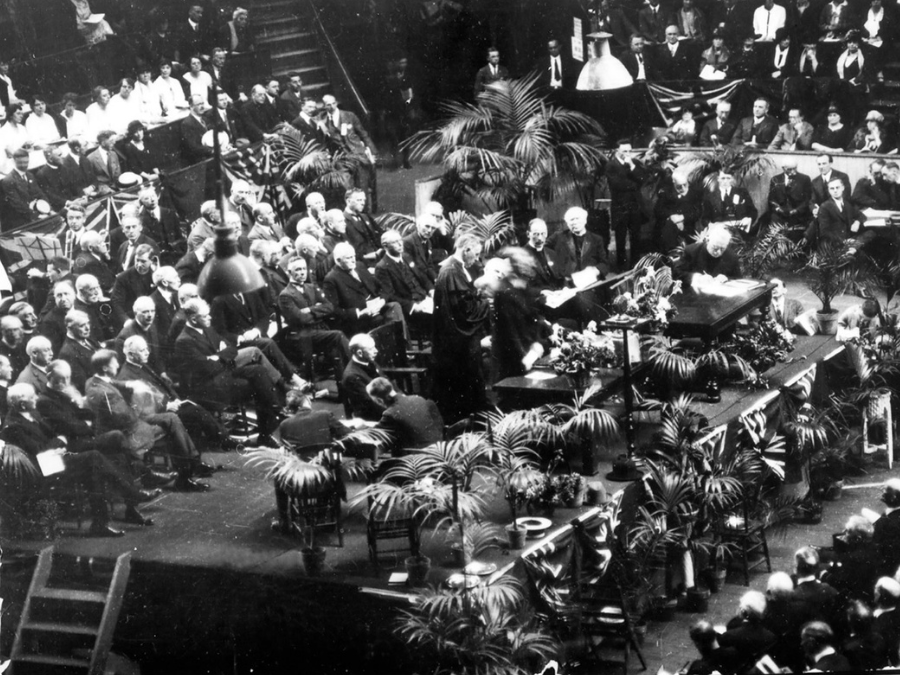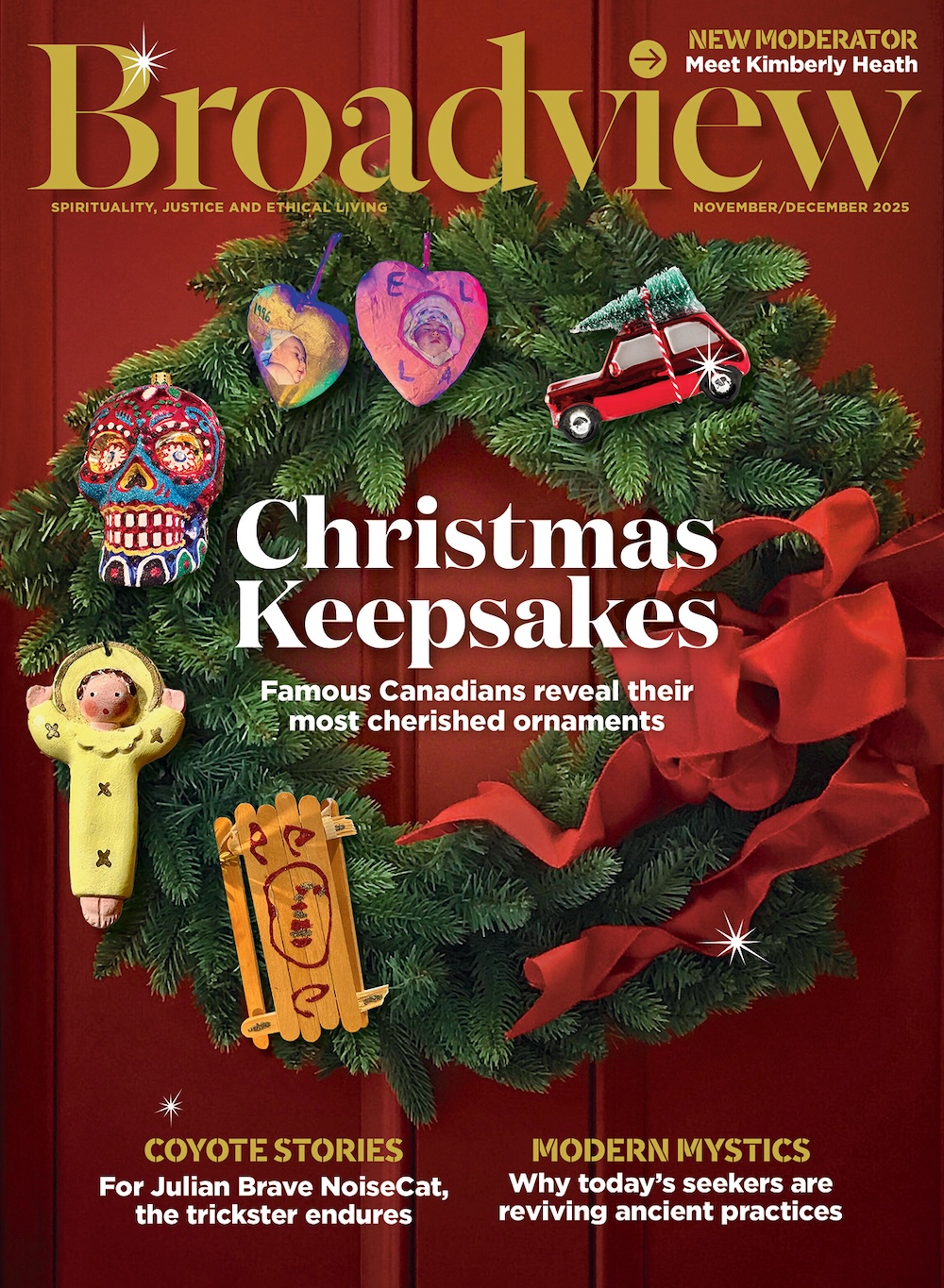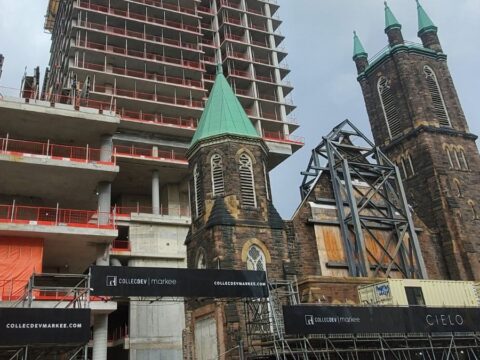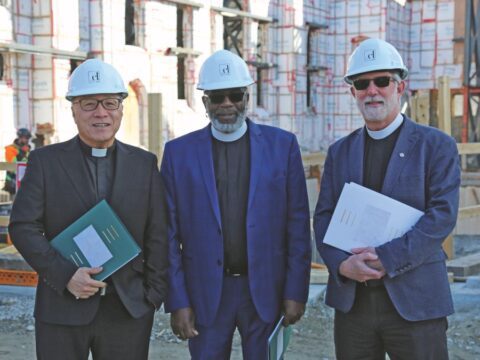Growing up in the Presbyterian Church in Canada in the 1970s, I remember old timers telling mythic tales of how we once were nearly absorbed into the United Church.
Some stories were about a great man and Presbyterian minister who saved us at the 11th hour of the 1925 General Assembly in Toronto. Presbyterians were about to hand over their tradition and their identity to a union with Congregationalists and Methodists, when Ephraim Scott rose to guide the flock out of the impending darkness.
You may unsubscribe from any of our newsletters at any time.
In other versions, it was the presbyters themselves who saved the day. Seventy-nine commissioners, having filed their dissent to union, paraded from College Street Church, at Bathurst and Queen Streets, where Assembly was held, to Knox Church, on Spadina Avenue. They sang praise hymns, reflected on their faith and prayed for guidance. They reconvened as an assembly of Presbyterians at St. Andrew’s on King Street.
In his 1975 book about the denomination’s history, John S. Moir wrote, “In the belief of the majority, the Presbyterian Church in Canada was passing into The United Church of Canada; in the belief of the minority, the Presbyterian Church in Canada was marching forward in enduring witness, decimated but not consumed.”
That’s who we Canadian Presbyterians were, the Lambs of God, the Burning Bush. We were the “enduring witness” — which, of course, was the title of Moir’s book.
In the end, some 70 percent of congregations voted to join The United Church of Canada. The 30 percent who continued as the Presbyterian Church in Canada, didn’t think of themselves as a minority.
“Union had been voted and agreed upon in 1915. The anti-union movement had been going on for at least a decade, and building,” Rev. Stuart Macdonald tells me over video chat. That story of the dissenters parading, or of Ephraim Scott saving the day, was all performative, he says.
Macdonald was ordained in 1985 and recently retired as a professor of church history at Knox College of the University of Toronto, where he worked for the past three decades. His latest book, Tradition and Tension, tells the story of the Presbyterian Church after union. The dissent was organized and planned, and carefully orchestrated, he argues in the book. “The denomination was intentional in its desire to be a major Reformed denomination open to all Canadians.”
And that’s how I encountered it in the 1970s and 1980s. I remember it as a place of deep community, and of thoughtful and expansive sermons. I went to church camps in my early teens, where Macdonald was my camp counsellor. I was ordained an elder in my late teens, participated at presbytery, went to General Assembly. I was a lay minister in my early 20s, serving rural congregations in Alberta and British Columbia. Early in this century, I was an editor with the national church magazine, the Presbyterian Record.
The Presbyterian Church in Canada has long been my small town. Insular, perhaps, though embracing, like a large, messy family.
The Presbyterian Church in Canada was born of an 1875 union of various denominations from Great Britain. Factions that had once bickered over polity and theology found common ground. Talk of a further union, with the Methodists, who had split out of the Anglicans, began almost immediately thereafter. It was to be the largest Protestant denomination in the country. A statement of understanding was reached by 1915.
More on Broadview:
The Presbyterian church had 4,397 congregations and 377,956 members in 1924. After union, the continuing church had 1,140 congregations and 154,243 members.
These days, there are about 62,000 in the Presbyterian church. Half a century ago, I recall old, old men expressing acrimony toward the United Church. For them, denominational identity mattered. It was a common enough rant, then, but I have not heard it in decades.
“My generation doesn’t care about church union,” Rev. Alex MacLeod tells me over a beer. “For my generation, there’s no [memory of] ‘endurance.’”
MacLeod is senior minister at Knox Church Spadina. He’s in his mid-50s and followed his father into ministry. “The idea there was an enduring witness, that we didn’t cave into union, we just inherited that. We don’t remember any acrimony.”
He says the church has other challenges than to look back at what was. He tells me his staff — all younger than him — tease him because he wants to do something to recognize a century since church union, and the 150th anniversary of the continuing denomination.
“For the most part, union is old news,” writes Rev. Jonathan Tait, minister in Baxter, Ont.
He adds, “The recent decision to move into joint offices with the Anglicans and the United Church does seem to have some folks revisiting this conversation. I think ‘denominational headquarters’ is generally perceived positively.”
Sometime in 2026, Bloor St. United, fully renovated, with a block of condominiums atop, will open to a different sort of enduring witness. The building will be home to the national offices for three winnowing denominations, along with congregations from different faiths. It will be a house for God in a way the 79 dissenters didn’t imagine possible a century ago.
As membership in the Presbyterian Church in Canada dwindles, and denominational identity wanes, something else is happening that is much more interesting. Most of the people I sit with in the pews don’t seem so fussed about being Presbyterian. They are much more concerned about how to witness in society. I have seen performative exhortations of faith over the decades. Today, I sense serious conversations in church over how to express our love in, and through, Christ.
I wish I were in my teens again, because this is an exciting time to be in church. It is no longer in vogue, and that has always been the best time to hang out in the pews.
***
Andrew Faiz is a Toronto writer.














Andrew
Loved your take on the Presbyterian Church of today! WE (I am a retired minter of the PCC) are in a great transformation and excited about the unfolding future. Thank you for this piece…
Blessings to our UCC folk celebrating their 100th! My wife is a UCC minister… go figure!
I come from a staunch Presbyterian family on one side and a staunch Anglican one on the other. St. Andrew’s Presbyterian Church in Hanover, Ontario, was where I was very involved in many parts of church life in my youth. Then I travelled and had a family and mostly lost touch with church. In my 60’s I rediscovered Tolmie Presbyterian Church in Port Elgin, Ontario, with its amazing organist and choir leader, Anne Little, and its wonderful minister at the time, Chuck Moon. Now I’m living in Massey Ontario and I am very involved in St. Andrew’s United Church here as we celebrate the 100th birthday of the UCC. I must admit that my inner Presbyterian is a bit miffed at this and I do share my connection to the burning bush with the congregation at times. It is an exciting time to be in church these days, as you say, because we are going deeper into spirituality and braver into social action. I have been fascinated by the role of the Presbyterian Church in the USA and its history of social action there. Thanks for this trip down memory lane and church history. We will be moving again soon (aging in place didn’t work) and I will always look to a church to find like-minded people, hopefully one with a great choir!
Thanks for this! I was baptized, confirmed, and ordained UCCanada. I always thought of those 30% Presbyterian holdouts as somehow the “odd balls” of our Canadian protestant story. But now I’ve been serving in the Presbyterian Church (USA) for 25 years. I’ve come to value the good work of mission, justice, and peacemaking, and the rich theological heritage, rigor and centrality of biblical study and proclamation, and the progressive socio-political stance of Presbyterians in North America, particularly within PC(USA) (which graciously acknowledged my UCCanada ordination easily through a process of an open call system). Thanks again. I appreciated your reflections as I celebrated the 100th anniversary of the UCC.
I love this piece – as I did the whole anniversary issue. I wish it made it there – but thank you for this one.
Glad to hear you enjoyed it and the issue! Never enough space for great stories — that’s what our website is for!